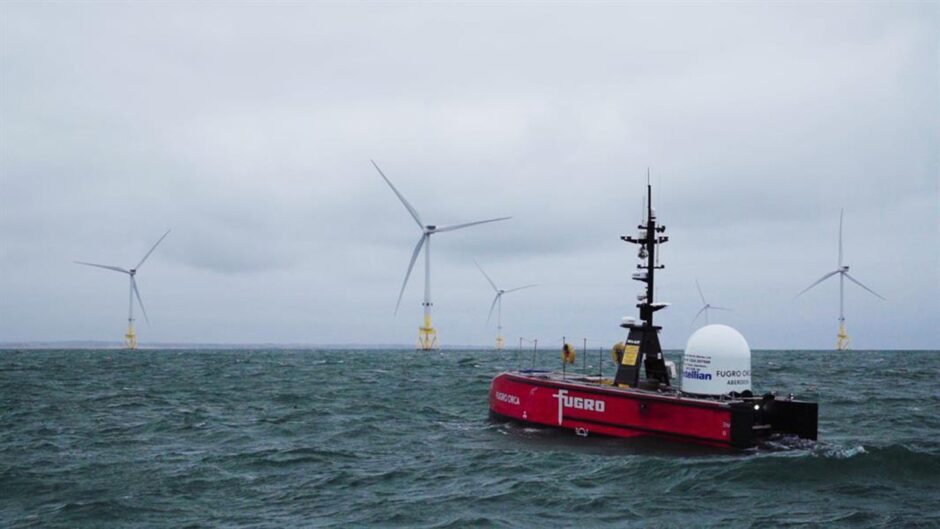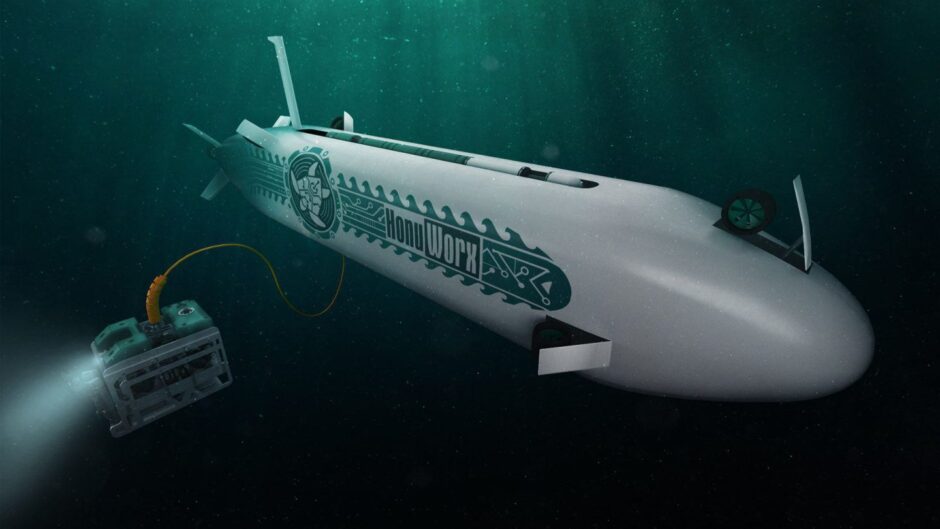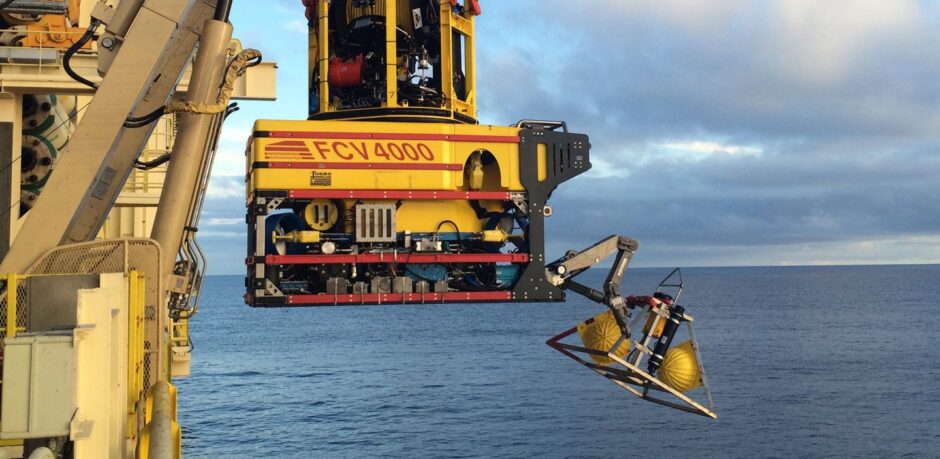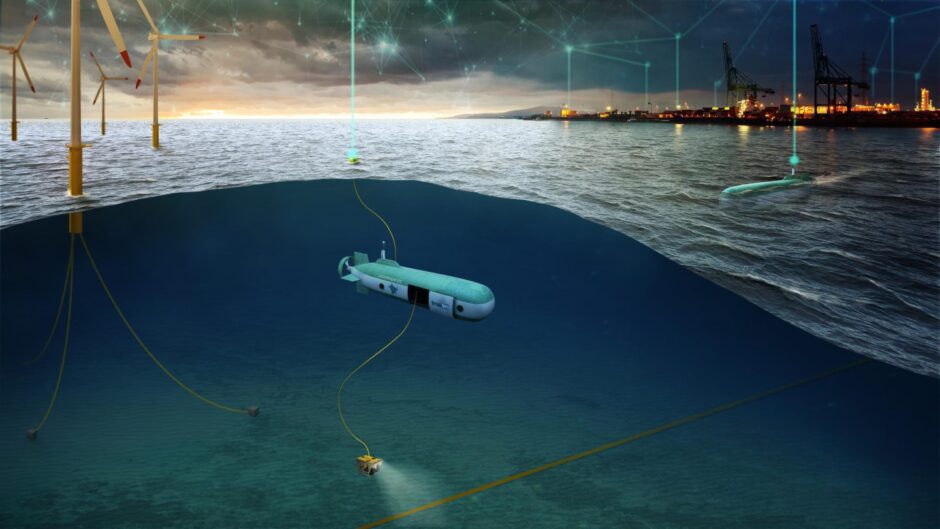
The idea of using robot workers was once the work of science fiction, however, it is now commonplace in the North Sea through the use of remotely operated vehicles (ROVs).
Starting out with devices that worked as nothing more than a camera on a stick with propellers in the late 1970s and early 80s, devices are now able to carry out work hundreds of feet underwater using robotic arms controlled by operators on the surface.
Chief executive of Aberdeen-based ROV firm HonuWorx, Lee Wilson, explained: “In the early 80s with the discovery of oil in the North Sea, it’s about 100 metres of water depth which is very accessible to saturation divers so a lot that early explanation and installation work was done by humans.”
However, as firms expanded ambitions for the North Sea the work of a diver became less safe, adding risk to an already dangerous job.
“You can imagine it’s quite a harsh environment to send a person into, there’s a lot of incidents and safety concerns. You’ve got to manage decompression and the pressure, humans aren’t designed to go deep underwater, we squish.”
These concerns around diver safety prompted the offshore energy sector to adopt ROVs, initially they were used in conjunction with divers “so that they could be more aware if there were any hazards,” Mr Wilson said.
However, as with most forms of technology, ROVs have evolved and as a result, they have become commonplace in the offshore energies market.
What started out as a camera fitted with lights and propellers to assistance for divers was expanded on and the technology can now operate on its own hundreds of meters below sea level, allowing workers to remain above the water.
ROVs and offshore wind
With their technology becoming more sophisticated, ROV firms see their machines playing a major part in the energy transition.
“I think everyone’s aware that offshore wind has really taken off,” said Mark Bruce, global product manager for Aberdeen ROV firm Fugro.
Mr Bruce explained that for all new offshore wind installations “pre-mapping work of the seabed has to be done” and maintenance needs to be carried out throughout an asset’s lifecycle, this is where ROVs come in.
Mr Wilson agreed, describing remotely operated vehicles as “hugely important” to the energy transition and the role out of offshore wind infrastructure.
He added as ROVs innovate, the economics of running a wind farm are affected as operations become more “cost-effective.”
“For offshore wind and the infrastructure that it needs to be installed on the sea floor, where they have to operate with much tighter margins and they need more cost-effective ways of maintaining and supporting their infrastructure.
“It seems to me that this scale the use of the technology, it’s not just about improving the vehicles themselves for as long as they’re dependent on a vessel, any improvement we make to the vehicle technology just becomes an incremental improvement on terms of economics.”
Looking forward offshore wind operators will have access to “assets that have self-monitoring capabilities”, however, currently “the market is that we need to go to subsea to monitor the assets,” explained Fugro’s global product manager.
Self-monitoring assets to come as a ‘relief’ to ROV firms
With the amount of work ROV firms have on the horizon within the offshore wind market, the idea of self-monitoring assets is a “relief” to firms such as Fugro.
Currently, ROVs are needed to monitor assets and assess the seabed and any cables connected to the wind farm, Mr Bruce explained.
With the UK government aiming to deliver 50 gigawatts of offshore wind by the end of the decade resources may become strained within the ROV market as demand grows.
Mr Bruce explained: “At the moment there’s so much work and there’s not enough assets to do it and if the wind industry develops as it’s predicted to do, then there’s going to be a huge shortage at the moment.
“So, it would probably ease in a little way, but certainly there would be so many other tasks that there’s always still needed the ROV and it will take a different length of time for different clients to buy into a self-monitoring system.”
He said that with the amount of work the ROV market has in store throughout the energy transition, “it’s not really a concern” if operators implement self-monitoring systems.
The future of ROVs
However, there are solutions being thought up for how ROVs can remain on-site at an offshore wind farm to perform work or carry out assessments permanently.
“Field resident” robots are a solution being discussed by some firms, the HonuWorx’s Lee Wilson said.
He added: “A few companies looking at that and Equinor in particular in Norway is championing that approach.”
This approach is not without its challenges though, additional infostructure – such as docking stations and fibre cables in some instances – is required to ensure this can work.
Another issue with this approach is “vehicles are typically constrained to quite a small radius around that one field,” Mr Wilson told Energy Voice.
If field resident robots prove successful, an ROV operator could pilot a vehicle from anywhere on the planet through the use of cables or satellite connections in order to perform tasks under the water.
Another strategy that ROV firms are looking into is unmanned vessels, with this approach a large remotely piloted vessel can be loaded with ROVs set to perform tasks deep under the water.
The large vessel can be piloted to a wind farm or oil and gas platform and deploy a smaller ROV to carry out necessary tasks.
Both Fugro and HonuWorx are looking to utilise this technology going forward with the latter working on the Loggerhead mothership all-electric and the former having deployed the Blue Essence uncrewed surface vessel to perform remote inspection at the Aberdeen offshore wind farm last year.
The world’s first fully remote inspection of offshore wind farm assets was carried out by Fugro in April with the firm’s Blue Essence uncrewed surface vessel and Blue Volta, an electrical remotely operated vehicle.
HonuWorx’s Loggerhead, developed in collaboration with support from the Offshore Renewable Energy (ORE) Catapult and Innovate UK, is a multifaceted system providing a sustainable solution for subsea work that requires physical intervention, such as maintenance of offshore energy infrastructure.
Recommended for you

 © Supplied by HonuWorx
© Supplied by HonuWorx © Supplied by Fugro
© Supplied by Fugro © Supplied by catapult offshore re
© Supplied by catapult offshore re